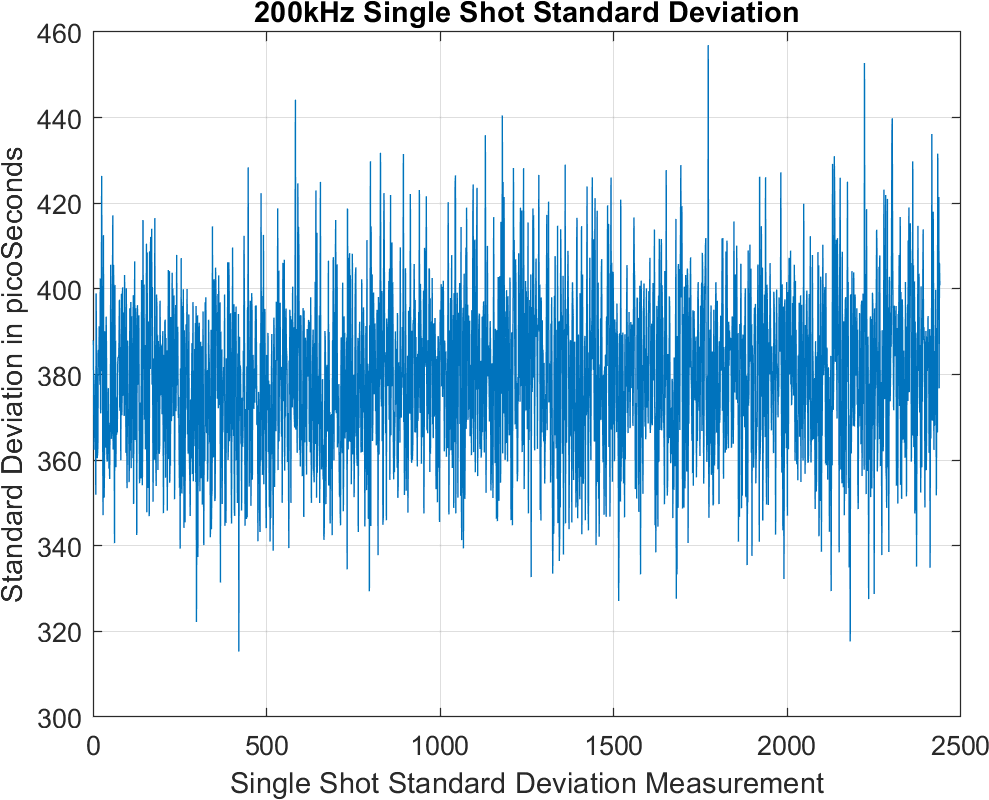TIDUEJ6A January 2019 – July 2022
- Description
- Resources
- Features
- Applications
- 5
- 1System Description
- 2System Overview
- 3Hardware, Software, Testing Requirements, and Test Results
- 4Design and Documentation Support
- 5About the Authors
- 6Revision History
3.2.2.1 Single-Shot Standard Deviation
The single-shot standard deviation of the differential ToF is a measure used to express the expected variance of the output at zero-flow and ambient temperature (see Figure 4-15). The STD is calculated by executing the application at an ambient temperature and in a zero-flow condition.
 Figure 4-15 Delta ToF Standard Deviation Measurements
Figure 4-15 Delta ToF Standard Deviation MeasurementsThe MSP430 Ultrasonic Design Center GUI can then be used to capture the DToF for 5 to 30 minutes, and the STD can be calculated using a tool like MATLAB® or Excel®.
The single-shot STD of blocks of 200 measurements are computed and plotted in Figure 4-15. Each plot represents single-shot STD of 200 measurements. The plot shows that the variation of single-shot STD is approximately 20 ps, and the average is <400 ps.